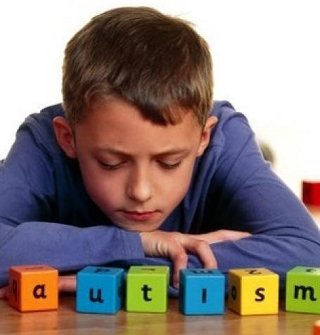
Emerging data from the United States Centers for Disease Control and Prevention shows the number of autism spectrum disorder diagnoses continuing to rise, surpassing the estimates in 2002 by roughly 120%. For childcare providers, this means an increasing influx of children into center based and group care settings whose needs are very different from those of their peers. Learning how to properly care for children on the autism spectrum is crucial for today's childcare provider.
Researchers still don't know what causes autism, or why the number of diagnoses continues to rise. Some of this increase may be attributed to changing methods of detection and diagnoses, and increased awareness of spectrum disorders, but the extent of this influence is still unknown. What researchers do know is that the proportion of children who are identified with a spectrum disorder can vary widely from one region to the next, with estimates ranging from 1 in 175 in areas of Alabama to 1 in 45 in parts of New Jersey. Boys are roughly five times more likely to be identified as ASD than girls, and less than half of the children identified today were evaluated for developmental concerns before they were three years old. Diagnosis of autism spectrum disorders can be reached as early as two years of age, but the majority of children with autism spectrum disorders were identified after the age of four.
Full-time childcare providers are likely to be with a child for the majority of their waking hours, which leaves them uniquely placed to pick up on the signs of autism spectrum disorder. Childcare providers can prove to be a very valuable resource for parents and medical professionals, and a child who may be on the autism spectrum, due simply to their presence and awareness. Caregivers who suspect a child may have an autism spectrum disorder should communicate their concerns to parents in order to facilitate earlier detection and intervention.
Because children on the autism spectrum may behave and respond differently than their peers, it's important for childcare providers to have a basic understanding of the appropriate care methods.
Every child is unique, and those with autism spectrum disorders are no exception. What overstimulates and upsets one child on the spectrum may not elicit a reaction at all from another, and methods of care which work well with some may fall flat when applied to others on the spectrum. Childcare providers must be prepared to adapt their care strategies accordingly, always remembering the differences inherent to each child. To provide the most effective care possible for children with ASD, caregivers must establish an open line of communication with parents in order to best supplement therapy throughout the day. Together, parents and caregivers can create the best possible environment for children on the spectrum, helping them to grow and thrive.
I am looking for resources for childcare for my child on the spectrum. My Child had IEP and he was going to Special School District full time until His IEP required less therapy. I can not work steady hours without childcare for him.
Hi My grandson was just diagnosed with autism spectrum He was kicked out of daycare because of it His parent needs a reliable daycare that will work with him In the St. Peter's Missouri area Unfortunately that can't afford a lot If there is anyway y'all can help would appreciate it Thank you
In need of childcare services for 5 year old granddaughter whom is on the spectrum. We reside in Chula Vista, California. Please advise.
I need to find a sitter or like a day care for my daughter she's has mildly Austic and bypolar no can't help me find one in her
My Daughter is on the spectrum and was kicked out of her daycare today I work two Job and mom work 1 full time please help in anyway possible in regards to daycare services. thank you